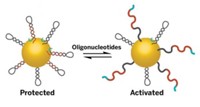Advertisement
Grab your lab coat. Let's get started
Welcome!
Welcome!
Create an account below to get 6 C&EN articles per month, receive newsletters and more - all free.
It seems this is your first time logging in online. Please enter the following information to continue.
As an ACS member you automatically get access to this site. All we need is few more details to create your reading experience.
Not you? Sign in with a different account.
Not you? Sign in with a different account.
ERROR 1
ERROR 1
ERROR 2
ERROR 2
ERROR 2
ERROR 2
ERROR 2
Password and Confirm password must match.
If you have an ACS member number, please enter it here so we can link this account to your membership. (optional)
ERROR 2
ACS values your privacy. By submitting your information, you are gaining access to C&EN and subscribing to our weekly newsletter. We use the information you provide to make your reading experience better, and we will never sell your data to third party members.
Materials
Researchers Report Largest DNA Origami To Date
Nanotechnology: Two new ways to create the component strands for DNA origami allow researchers to fold nanostructures seven times larger than before
by Robert Hackett
September 16, 2014

Bioengineers can harness DNA’s remarkable ability to self-assemble to build two- and three-dimensional structures through DNA origami. Until now, researchers using this approach have been limited to building structures that are tens of square nanometers in size. Now a team reports the largest individual DNA origami structures to date, which reach sizes of hundreds of square nanometers (Nano Lett. 2014, DOI: 10.1021/nl502626s). What’s more, they have developed a less expensive way to synthesize the DNA strands needed, overcoming a tremendous obstacle to scaling up the technology.
The first DNA origami structures were made in 2006 by Paul W. K. Rothemund of California Institute of Technology. His group reported a method of folding long, single-stranded DNA scaffolds into complex shapes, including smiley faces, by fastening them together with shorter stapling strands (Nature, DOI: 10.1038/nature04586). Researchers in the field envision the technique eventually leading to nanoscale devices such as tiny molecular computers or drug delivery vehicles.
To make the crucial single-stranded DNA scaffolds, Rothemund and other origami researchers use an M13 bacteriophage. But these phages can reliably make pieces that are only about 7 kilobase pairs long. A few researchers have attempted to make longer scaffolds out of double-stranded DNA, but these scaffolds are difficult to fold and result in low yields and messy by-products.
So Thomas H. LaBean of North Carolina State University and colleagues decided to create a hybrid bacteriophage that can produce a much longer, single-stranded DNA scaffold. The hybrid virus, which is a combination of the M13 and λ phage, can produce single strands of DNA that are a whopping 51 kbp long.
To fold such a long DNA scaffold, the team needed more than 1,600 distinct DNA staple strands, each about 32 base pairs long. Making these strands with conventional custom DNA synthesis would have cost $7,000. So the team developed a low-cost method of synthesizing the DNA staples on reusable templates. They used a repurposed ink-jet printer to synthesize the strands atop chips bearing polymer micropillars. Then they used polymerase chain reaction to amplify the strands. Making the staple strands this way was less than one-tenth the cost, LaBean says.
Using the longer DNA scaffold and their stapling strands, the team created squat, notched rectangles that were hundreds of square nanometers in size. The surface area was seven times as large as similarly shaped structures made with the shorter, traditional DNA scaffold.
Caltech’s Rothemund is most excited about the ability to synthesize long DNA scaffolds. “They’ve achieved something people have been trying to do for a while,” he says. The customized ink-jet printer for making the DNA staple strands is “cool,” Rothemund says; however, the technology isn’t widely available yet.




Join the conversation
Contact the reporter
Submit a Letter to the Editor for publication
Engage with us on Twitter